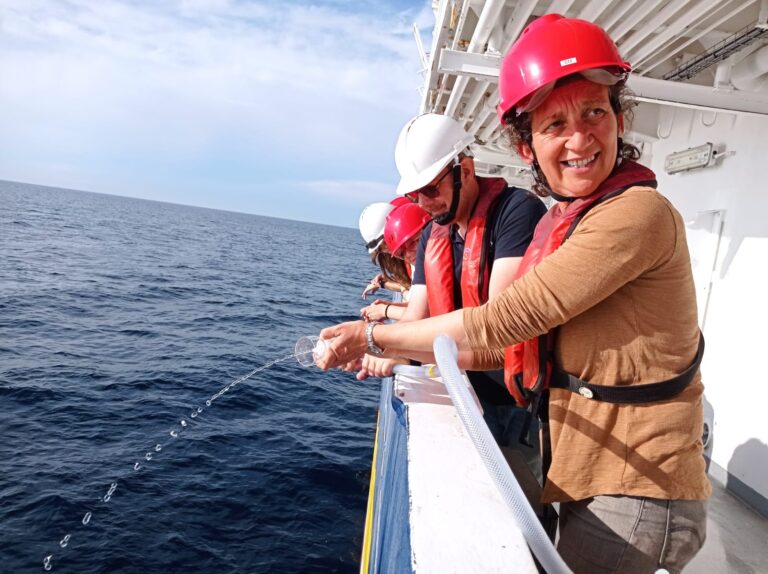High frequency and precision to study nutrient concentrations in the Mediterranean Sea
Elvira Pulido leads the WP3 dedicated to nutrients in the ocean. She describes the importance of measuring the concentration of nutrients in the ocean - as they ultimately control biological activity and diversity - and how they will be measured as part of the BioSWOT-Med campaign.

RESEARCH THEMES Elvira Pulido is a marine biogeochemist with a general interest in the nutrient cycle at the ocean surface. She is particularly interested in the oligotrophic ocean, where nutrient scarcity limits biological activity and carbon export is therefore highly dependent on nutrient availability. She is currently using highly sensitive techniques to measure the concentration of phosphate in seawater in order to gain a better understanding of the phosphorus cycle in the surface ocean, particularly with regard to the mechanisms involved in the supply of phosphate to the euphotic zone and the bioavailability of the organic phosphorus pool. Elvira Pulido is a CNRS researcher working at the Mediterranean Institute of Oceanology (MIO) in Marseille, France.
As part of the BioSWOT-Med campaign, you are in charge of WP3 on nutrients in the ocean. What chemical substances will you be measuring? Why is it important to measure them in the ocean?
The availability of nutrients can ultimately control biological activity and diversity. This is particularly true in nutrient-poor ocean regions such as the Mediterranean Sea. One of the main objectives of the BioSWOT-Med campaign is to study how and to what extent small-scale ocean dynamics influence the distribution and fluxes of nutrients. The study of nutrient dynamics during the BIOSWOT-Med campaign faces two challenges: firstly, the study area is characterised by very low nutrient concentrations and, secondly, fine-scale ocean circulation will cause small (i.e. nanomolar) and rapid changes in nutrient concentration. These two challenges will be addressed by measuring nutrients (nitrate, nitrite and phosphate) both at high frequency and with high accuracy.
The Mediterranean Sea is described as "oligotrophic". What does this mean? What are the differences with other seas/other regions of the ocean?
The term oligotrophic comes from the Greek oligos, meaning "small" or "little", and trophe, meaning "nutrition". Oligotrophic marine regions are therefore characterised by a low concentration of nutrients and low biological productivity due to a more or less pronounced thermal stratification that delimits a warm mixed layer at the surface. They cover up to 60 % of the world's ocean, including regions such as the Mediterranean Sea and the large subtropical gyres of the Atlantic and Pacific oceans, and play a key role in climate regulation by providing a third of total marine carbon fixation. In addition, oligotrophic regions are currently expanding due to increases in sea surface temperature and stratification. Studying how these regions function is therefore crucial to understanding the current and future role of the ocean in climate regulation.
Contact us: Tosca Ballerini
More information




